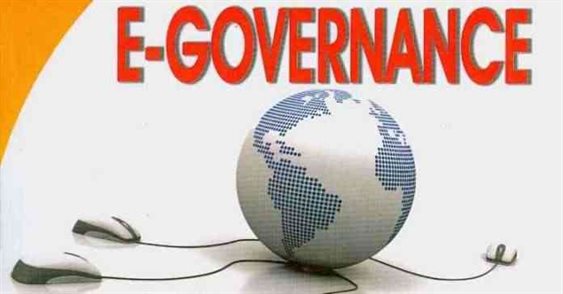E-Governance is the implementation of ICT. The ICT stands for Information and Communication Technology in the government department. Likewise, the central E-Governance is to make government services efficient, accessible and convenient. The use of E-governance is to overcome the boundaries. That is of a traditional paper-based system. It is the enhancement of current government. And it also helps to provide better government services to the citizen. Hence, E-governance delivers SMART government.
S- Simple
M-Moral
A-Accessible
RT-Responsive Government
The E-Governance is not only a website on the internet. E-governance is providing governmental services that are accessible through the internet. It refers to any government process or function that is out online in digital form.
Similarly, E-governance is the involvement of digital democracy, online service delivery. Likewise, it is also as online citizen participation. An ordinary citizen gets the government facility through the internet. E-governance is the network that includes government, public, and business organizations.
E-Governance is of 4 types depending on the specific types of services.
1. Government-to-Citizen(G2C)
The Government-to-citizen refers to the government services that are accessed by the familiar people. And Most of the government services fall under G2C. Likewise, the primary goal of Government-to-citizen is to provide facilities to the citizen. It helps the ordinary people to reduce the time and cost to conduct a transaction. A citizen can have access to the services anytime from anywhere.
Furthermore, Many services like license renewals, and paying tax are essential in G2C. Likewise, spending the administrative fee online is also possible due to G2C. The facility of Government-to-Citizen enables the ordinary citizen to overcome time limitation. It also focuses on geographic land barriers.
2. Government-to-business (G2B)
The Government to business is the exchange of services between Government and Business organizations. It is efficient for both government and business organizations. G2B provides access to relevant forms needed to comply. The G2B also consists of many services exchanged between business sectors and government.
Similarly, the Government to business provides Timely business information. And A business organization can have easy and convenient online access to government agencies. G2B plays a crucial role in business development. It enhances the efficiency and quality of communication and transparency of government projects.
3. Government-to-Government (G2G)
The Government-to-Government refers to the interaction between different government department, organizations, and agencies. This increases the efficiency of government processes. In G2G, government agencies can share the same database using online communication. The government departments can work together. This service can increase international diplomacy and relations.
In conclusion, G2G services can be at the local level or the international level. It can communicate with global government and local government as well. Likewise, it provides safe and secure inter-relationship between domestic or foreign government. G2G constructs a universal database for all member states to enhance service.
4. Government-to-Employee (G2E)
The Government-to-Employee is the internal part of G2G sector. Furthermore, G2E aims to bring employees together and improvise knowledge sharing.
Similarly, G2E provides online facilities to the employees. Likewise, applying for leave, reviewing salary payment record. And checking the balance of holiday. The G2E sector provides human resource training and development. So, G2E is also the relationship between employees, government institutions, and their management.











